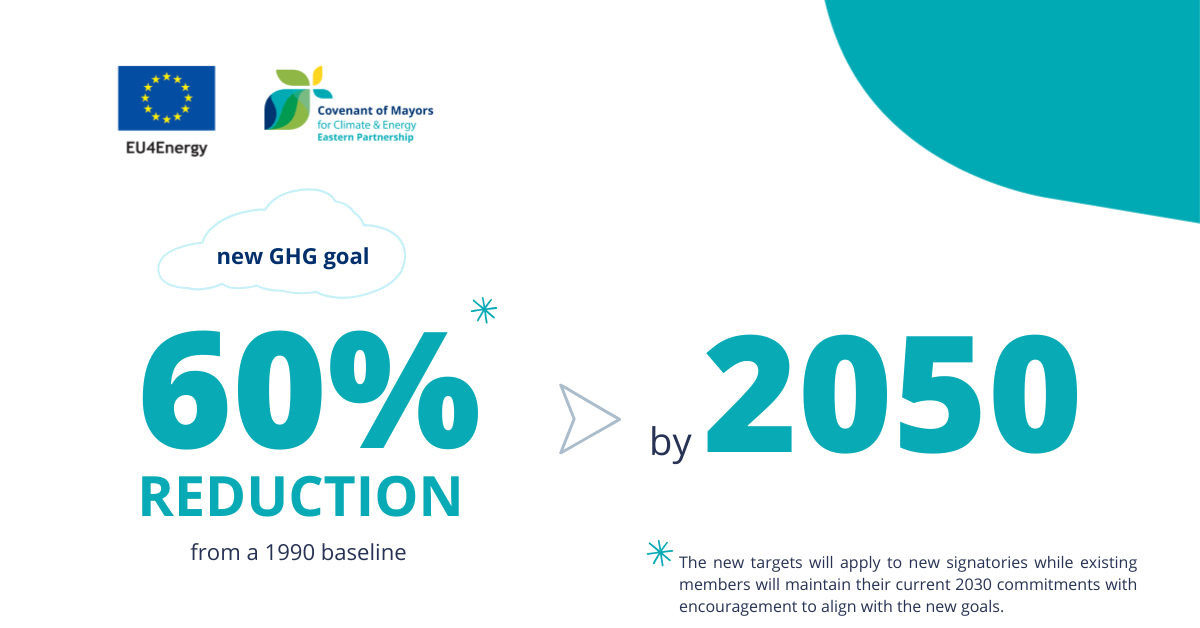Case studies, District heating, Municipal buildings and facilities, Others, RES, Residential buildings, Street lighting, Transport
Eastern Partnership Municipalities to Cut Emissions by 60% by 2050

Covenant of Mayors – East (CoM East) signatories will reduce their greenhouse gas emissions by a minimum of 60% by 2050 compared to 1990 levels, following a landmark decision by the Board.
The initiative currently unites 369 municipalities across the Eastern Partnership countries, representing almost a half of the region’s population.
This ambitious target represents an important step in aligning climate action in the Eastern Partnership with global efforts to combat climate change in line with the objectives of the European Green Deal and the Paris Agreement. The decision demonstrates the region’s commitment to limit the effect of climate change while supporting sustainable urban development and energy security.
The new long-term targets for 60% emission reduction will translate into specific requirements for different municipalities. New signatories in Armenia, Azerbaijan, Georgia, Moldova, and Ukraine will adopt these updated targets immediately. The municipalities using a baseline year after 2005 must achieve reductions between 40% and 60% by 2050.
At the same time, existing members will maintain their 2030 commitments with encouragement to align with the new goals.
Adrienn Kiraly, Director for Neighbourhood East and Institution Building at the European Commission (DG NEAR) commented:
‘This important decision demonstrates the Eastern Partnership cities’ strong commitment to climate action. The EU stands ready to support our municipal partners in achieving these ambitious targets. By setting these bold goals, Covenant of Mayors’ signatories are not just fighting climate change – they are paving the way for more resilient, sustainable, and prosperous communities in the Eastern Partnership region.’
The CoM East Secretariat and the EU Joint Research Centre (JRC) will support this transition by providing methodological guidance for data collection, technical assistance and harmonising national and local commitments5.
